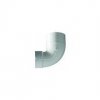adamw
New Member
I had a leak from my master bath toilet which was causing stains on the ceiling in the room below. It appears that it was coming from where the wax ring is. So I have the toilet out, I had to remove tile and subfloor from around it because the subfloor had rotted out. Now I'm ready to put the floor back together and have a couple of concerns.
1) I know the flange needs to be screwed into the floor below, so that means one of two things. I'll either have to remove the flange cut the new subfloor to have a hole the same width as the drain pipe or if I leave the flange in place I'll have to cut that subfloor piece in half to get it under the flange. I don't like option 2 because I don't feel like it will be as strong. Which do you think is the better solution?
2) When I put a level over the flange and the tile, I can tell that the top of the flange is flush with the top of the tile. Is this correct? From what I've been reading around here the optimal setup is that the flange sits on top of the finished floor surface. So which is best? Do I need to raise the flange to be on top of the tile when installed?
3) If I need to get the old flange out to either get the subfloor in place and/or to raise it, what is the best way to get it out?
Picture is attached.
Thanks!
1) I know the flange needs to be screwed into the floor below, so that means one of two things. I'll either have to remove the flange cut the new subfloor to have a hole the same width as the drain pipe or if I leave the flange in place I'll have to cut that subfloor piece in half to get it under the flange. I don't like option 2 because I don't feel like it will be as strong. Which do you think is the better solution?
2) When I put a level over the flange and the tile, I can tell that the top of the flange is flush with the top of the tile. Is this correct? From what I've been reading around here the optimal setup is that the flange sits on top of the finished floor surface. So which is best? Do I need to raise the flange to be on top of the tile when installed?
3) If I need to get the old flange out to either get the subfloor in place and/or to raise it, what is the best way to get it out?
Picture is attached.
Thanks!


